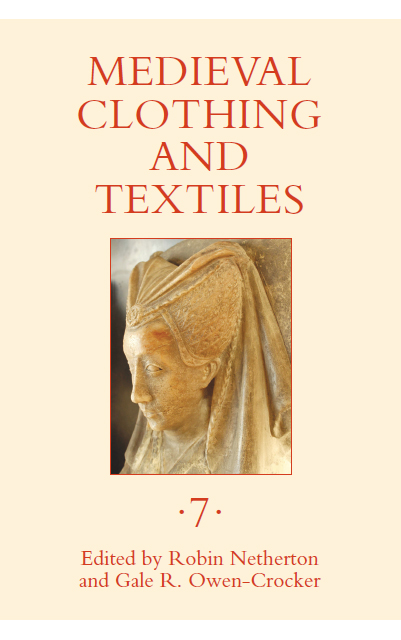Book contents
- Frontmatter
- Contents
- Illustrations
- Tables
- Contributors
- Preface
- The Empress’s New Clothes: A Rotulus Pannorum of Isabella, Sister of King Henry III, Bride of Emperor Frederick II
- Unveiling Social Fashion Patterns: A Case Study of Frilled Veils in the Low Countries (1200–1500)
- What Is the Pearl-Maiden Wearing, and Why?
- “Hys surcote was ouert”: The “Open Surcoat” in Late Medieval British Texts
- London Merchants’ Cloth Exports, 1350–1500
- Laboreria Sete: Design and Production of Lucchese Silks in the Late Fourteenth and Early Fifteenth Centuries
- Recent Books of Interest
- Contents of Previous Volumes
What Is the Pearl-Maiden Wearing, and Why?
Published online by Cambridge University Press: 18 February 2023
- Frontmatter
- Contents
- Illustrations
- Tables
- Contributors
- Preface
- The Empress’s New Clothes: A Rotulus Pannorum of Isabella, Sister of King Henry III, Bride of Emperor Frederick II
- Unveiling Social Fashion Patterns: A Case Study of Frilled Veils in the Low Countries (1200–1500)
- What Is the Pearl-Maiden Wearing, and Why?
- “Hys surcote was ouert”: The “Open Surcoat” in Late Medieval British Texts
- London Merchants’ Cloth Exports, 1350–1500
- Laboreria Sete: Design and Production of Lucchese Silks in the Late Fourteenth and Early Fifteenth Centuries
- Recent Books of Interest
- Contents of Previous Volumes
Summary
Anyone who has read and studied Pearl, the late-fourteenth-century Middle English poem classified variously as a dream vision or consolatio, likely retains only a vague mental image of the Pearl-Maiden’s garments. In Pearl—which survives only in the Cotton Nero A.x. manuscript along with Sir Gawain and the Green Knight, Patience, and Cleanness or Purity—the Pearl-Maiden acts as a guide and instructress to the grief-stricken narrator or Dreamer. The Maiden appears within the Dreamer’s vision wearing a brilliant white gown ornamented with pearls and a crown decorated with yet more pearls, and she bears—somehow affixed to the breast of her gown—“a wonder perle withouten wemme” [a wondrous pearl without equal] (221–22). In addition to this mention of the wonder perle, the poem opens and closes with pearl references, the Dreamer identifies the Maiden herself as the lost pearl he grieves over (242), the Pearl-Maiden reiterates to the Dreamer the parable of the Pearl of Price (729–32), and the Maiden refers to Christ as her “dere Juelle” [dear Jewel] or pearl (795). Due to the extensive repetition and diversity of pearl images throughout the poem, the wonder perle on the Maiden’s gown has been a major focus of scholarship since the poem was first edited in 1869. The symbolism of this singular pearl, the Pearl-Maiden herself, and the Pearl of Price has, understandably, been explored and examined in great depth.
However, amid attempts to assess the unanswerably large question of what the wonder perle signifies, the garment to which it is attached has been ignored. In most critical examinations, the details of the Pearl-Maiden’s attire blur and contract into an ornate, white setting described only to highlight the centrally located wonder perle. Although I agree that the central perle does, indeed, merit the critical attention it continues to receive, the purpose of this study is to examine the setting rather than the stone. What is this garment to which the “perle withouten wemme” is attached? Is it, to cite E. V. Gordon’s oft-quoted description, merely “a simple form of the aristocratic dress of the second half of the fourteenth century”?
- Type
- Chapter
- Information
- Medieval Clothing and Textiles 7 , pp. 65 - 86Publisher: Boydell & BrewerPrint publication year: 2011

